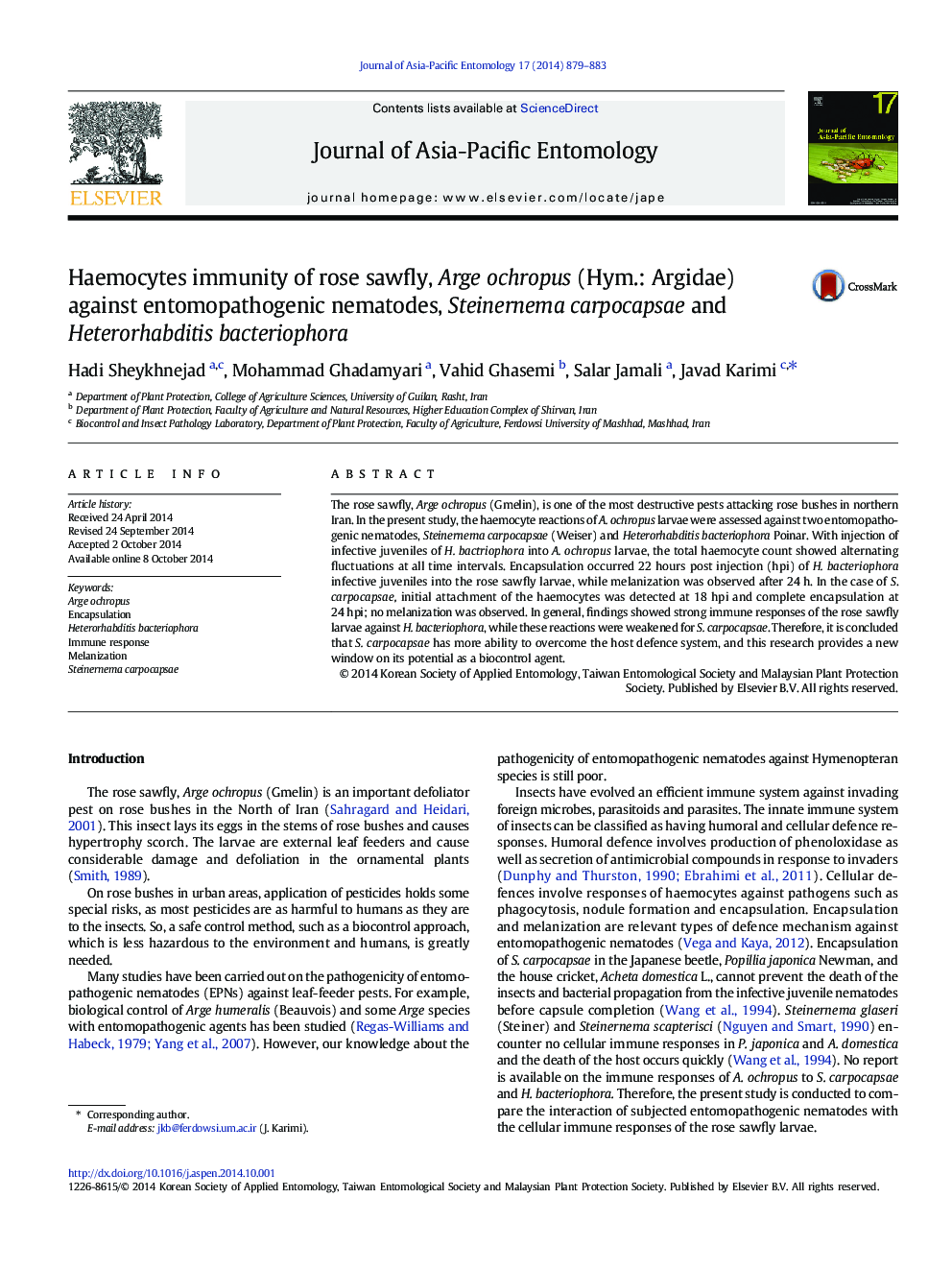| Article ID | Journal | Published Year | Pages | File Type |
|---|---|---|---|---|
| 4524538 | Journal of Asia-Pacific Entomology | 2014 | 5 Pages |
•Description of the events after injection of entomopathogenic nematodes into the rose sawfly larvae, Arge ochropus.•Immunity reactions of Arge ochropus larvae against Heterorhabditis bacteriophora and Steinernema carpocapsae•Different reactions including initial cell attachment, partial encapsulation, encapsulation and melanization were observed.•H. bacteriophora incurred stronger cell reactions from rose sawfly larvae than S. carpocapsae•First survey on defence reactions of Hymenoptera against nematodes
The rose sawfly, Arge ochropus (Gmelin), is one of the most destructive pests attacking rose bushes in northern Iran. In the present study, the haemocyte reactions of A. ochropus larvae were assessed against two entomopathogenic nematodes, Steinernema carpocapsae (Weiser) and Heterorhabditis bacteriophora Poinar. With injection of infective juveniles of H. bactriophora into A. ochropus larvae, the total haemocyte count showed alternating fluctuations at all time intervals. Encapsulation occurred 22 hours post injection (hpi) of H. bacteriophora infective juveniles into the rose sawfly larvae, while melanization was observed after 24 h. In the case of S. carpocapsae, initial attachment of the haemocytes was detected at 18 hpi and complete encapsulation at 24 hpi; no melanization was observed. In general, findings showed strong immune responses of the rose sawfly larvae against H. bacteriophora, while these reactions were weakened for S. carpocapsae. Therefore, it is concluded that S. carpocapsae has more ability to overcome the host defence system, and this research provides a new window on its potential as a biocontrol agent.
Graphical abstractFigure optionsDownload full-size imageDownload as PowerPoint slide
